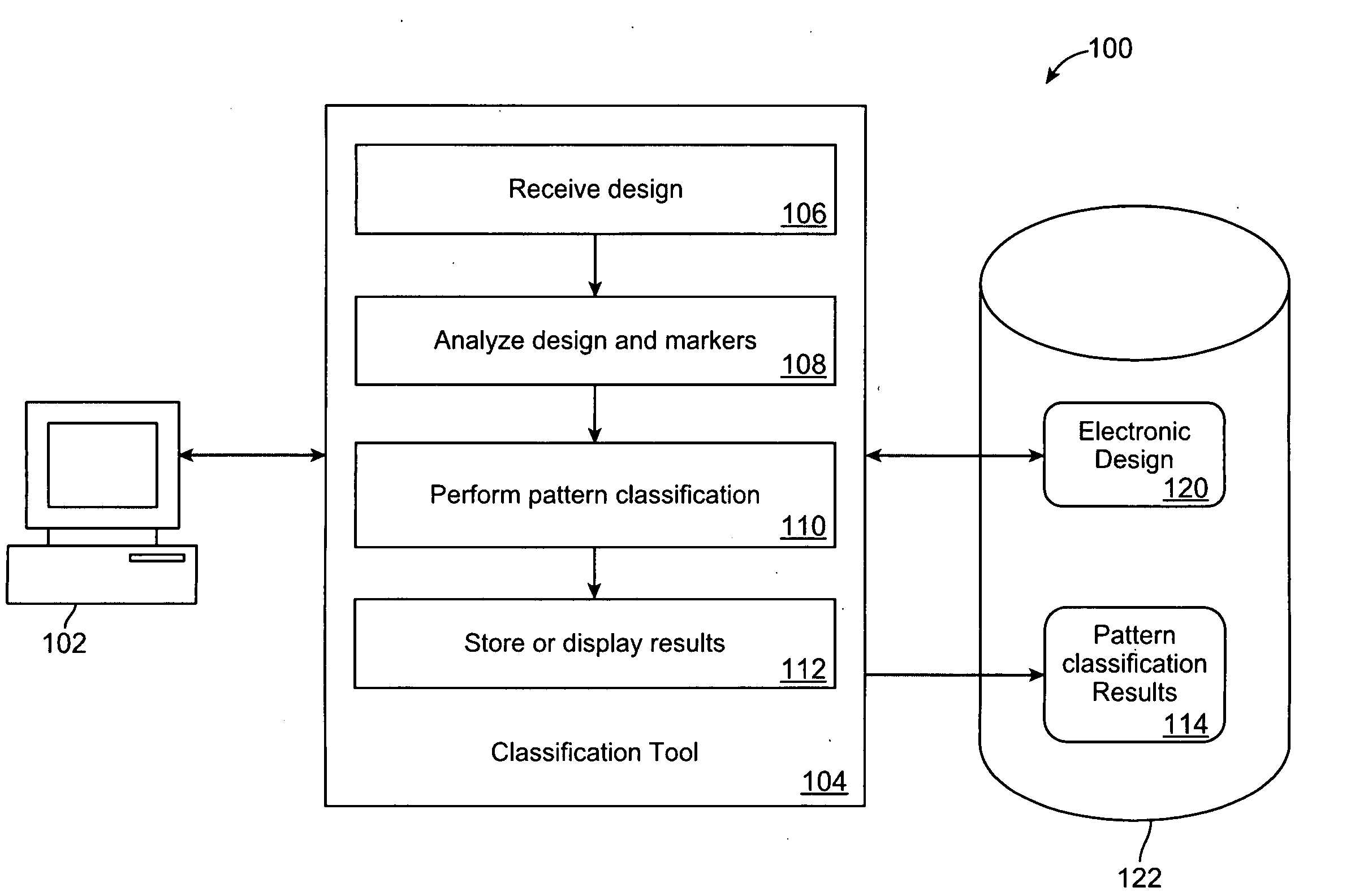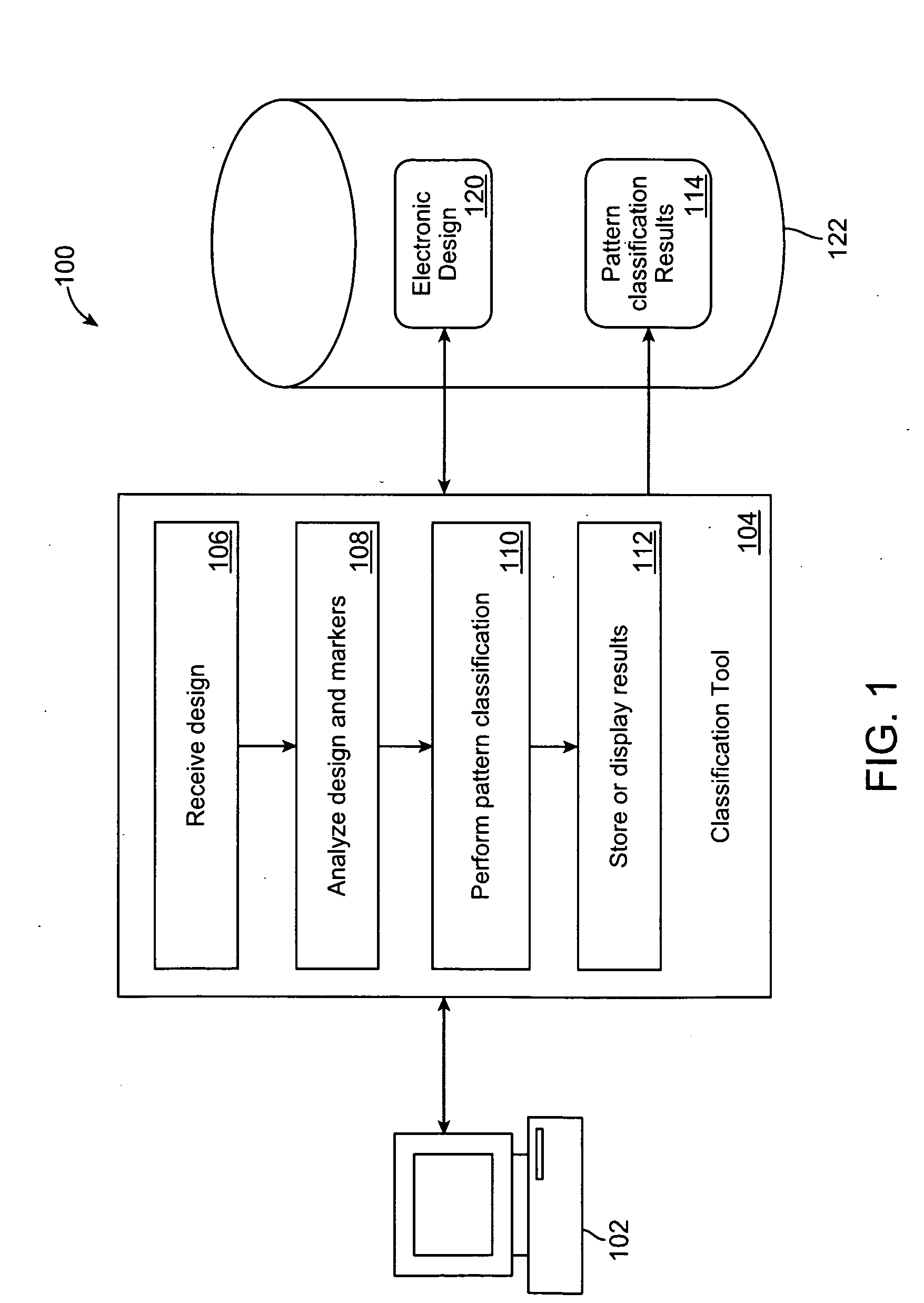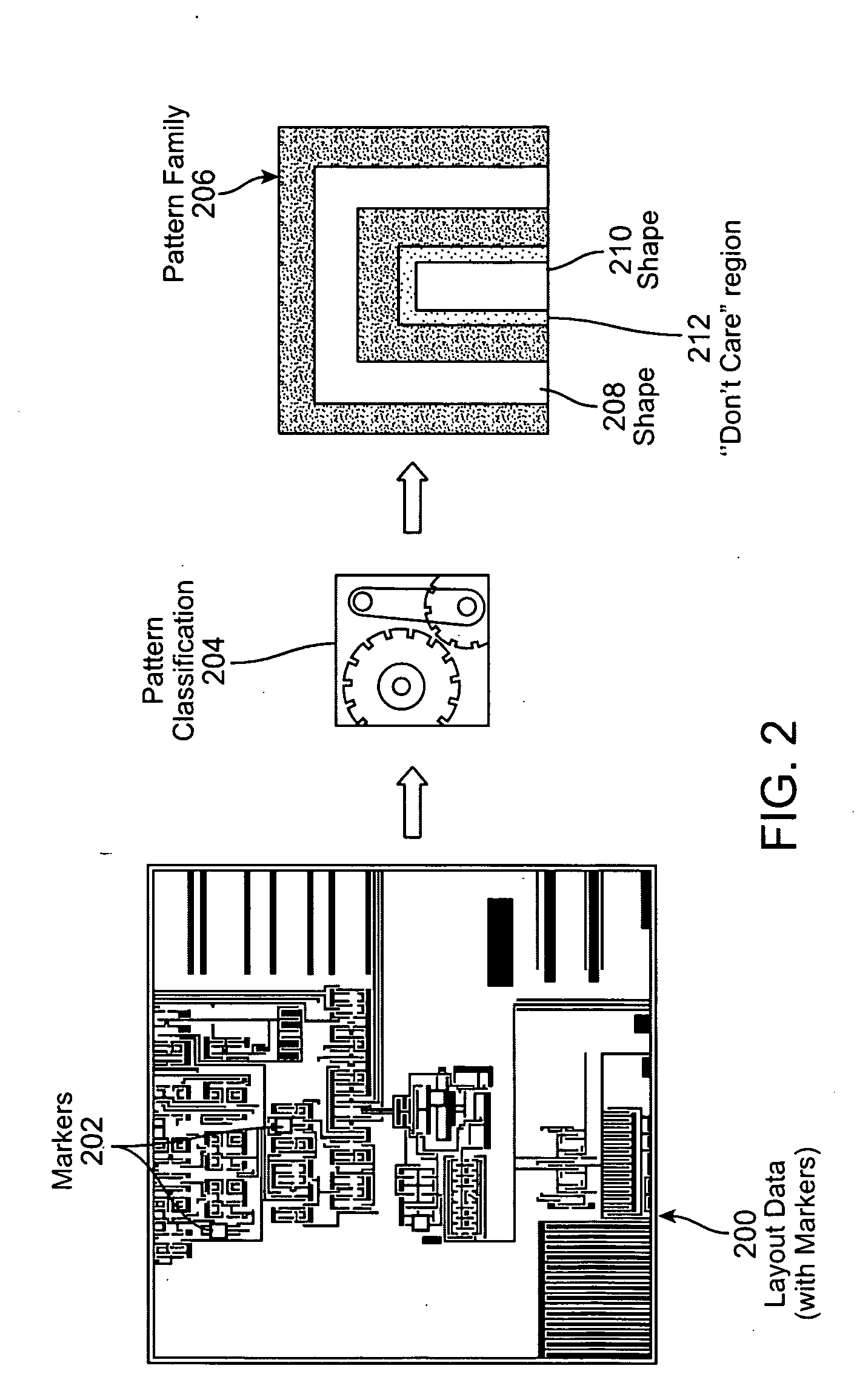Method and system for performing pattern classification of patterns in integrated circuit designs
a technology of integrated circuits and patterns, applied in the field of pattern classification and system, can solve the problems of large number of markers, large feature dimensions, and difficulty for either a human or an automated program to efficiently review these results and perform analysis, and achieve the effect of reducing the quantity of system resources and time and fast pattern matching techniques
- Summary
- Abstract
- Description
- Claims
- Application Information
AI Technical Summary
Benefits of technology
Problems solved by technology
Method used
Image
Examples
Embodiment Construction
[0022]The present approach is directed to a method, system, and computer readable medium for performing pattern classification for electronic designs. One advantage of this invention it that it can use fast pattern matching techniques to classify both patterns and markers based on geometric similarity. In this way, the large number of markers and hotspots that typically are identified within an electronic design can be subsumed and compressed into a much smaller set of pattern families. This significantly reduced the number of patterns that must be individually analyzed, which considerably reduces the quantity of system resources and time needed to analyze and verify a circuit design.
[0023]The advantage of using geometric similarity is that there is often a large amount of geometric redundancy. This type of similarity can result in compression of information so there is less for a human to review. Further, geometric similarity is something that is intuitive to a human.
[0024]This app...
PUM
 Login to View More
Login to View More Abstract
Description
Claims
Application Information
 Login to View More
Login to View More - R&D
- Intellectual Property
- Life Sciences
- Materials
- Tech Scout
- Unparalleled Data Quality
- Higher Quality Content
- 60% Fewer Hallucinations
Browse by: Latest US Patents, China's latest patents, Technical Efficacy Thesaurus, Application Domain, Technology Topic, Popular Technical Reports.
© 2025 PatSnap. All rights reserved.Legal|Privacy policy|Modern Slavery Act Transparency Statement|Sitemap|About US| Contact US: help@patsnap.com



